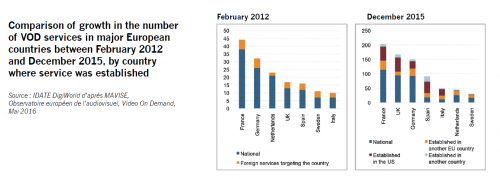Their coverage is in fact an assembly of national rights whose geographic scope continues to be confined to the Member State that grants them.
At a time when more and more consumers are watching videos on mobile devices, and expect to be able to do so anywhere, anytime, the territorial aspect of copyright creates problems when it comes to cross-border access and the portability of this content. According to the European Commission, the ability to access a video service in another Member State is guaranteed for less than 4% of all VoD content in the EU. Moreover, for copyright reasons, consumers are often unable to continue to access a VoD service they subscribe to at home when travelling in another European Union country.
The territoriality of copyright is, however, far from being the single obstacle to the development of cross-border services. At the top of the list of other hurdles is the national exclusivity imposed by rights owners to secure pre-financing for their content, along with:
- the costs and constraints bound up with the need to employ multilingual staff to provide customer service;
- different national regulations on private copies, consumer protection, the protection of minors, taxation,distribution windows, etc.;
- subtitling and dubbing costs;
- the cost of localising marketing campaigns;
- the lack of technical standards for distributing content;
- low broadband availability and/or adoption levels in some countries;
- the lack of demand for cross-border services.
A less ambitious plan, which aimed only to guarantee the portability of content across Europe, would seem more realistic. For service providers, this would mean negotiating a clearly defined exception with rights holders, and providing a clear framework for the territoriality of rights, to be able to allow their customers to view their programmes wherever they are in Europe.
Comparison of growth in the number of VOD services in major European countries
TV in the Digital Single Market: Impact of current regulatory changes on the audiovisual value chain
More infoWorld TV & Video Services Markets: Terrestrial - Satellite - Cable - IPTV - DVD - Blu-ray - Video on demand
More infoVideo-On-Demand: Europe’s main markets in the aftermath of Netflix world conquest
More infoVideo Solution Providers: Towards Software-Defined Video
More infoTags


